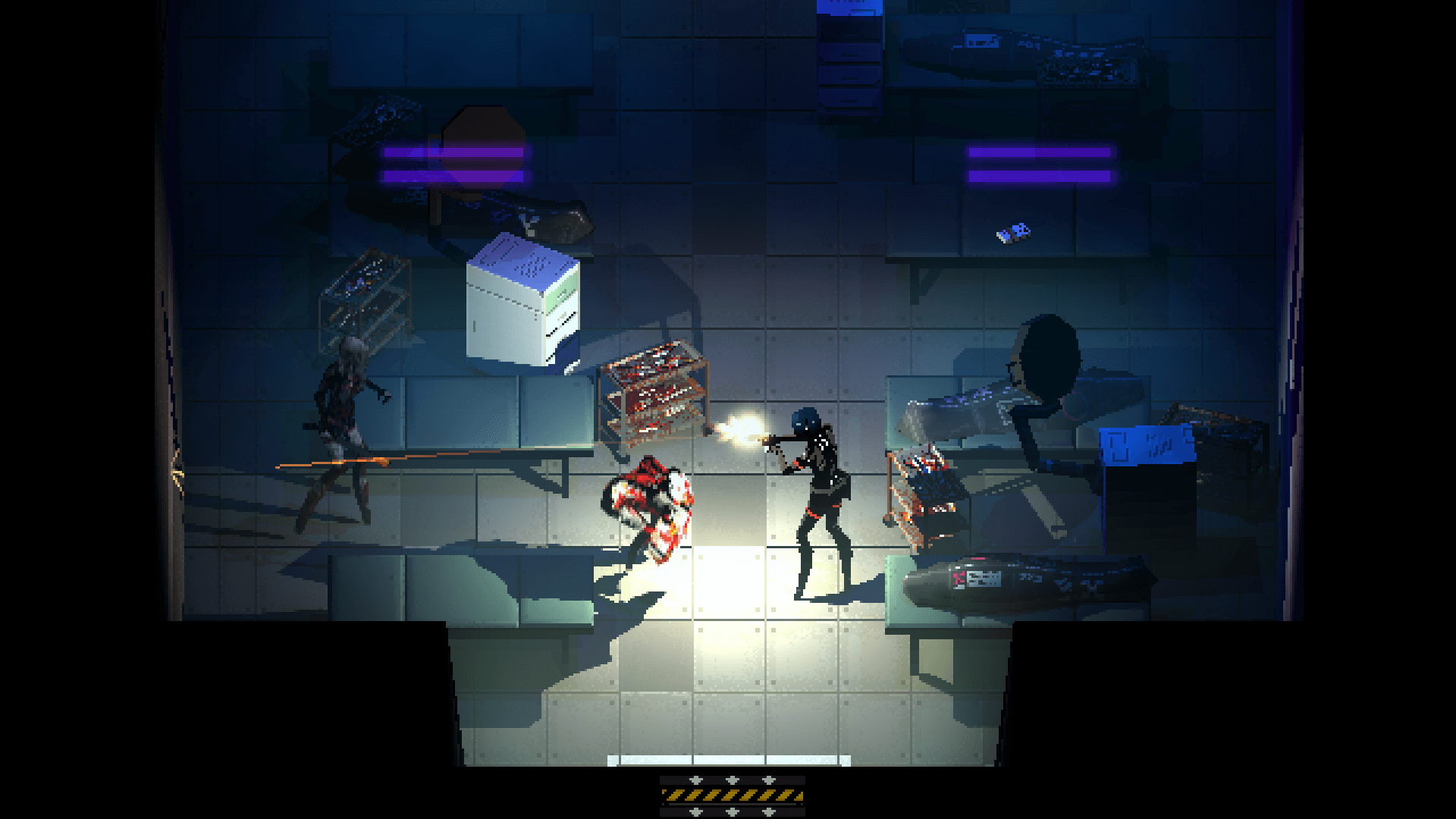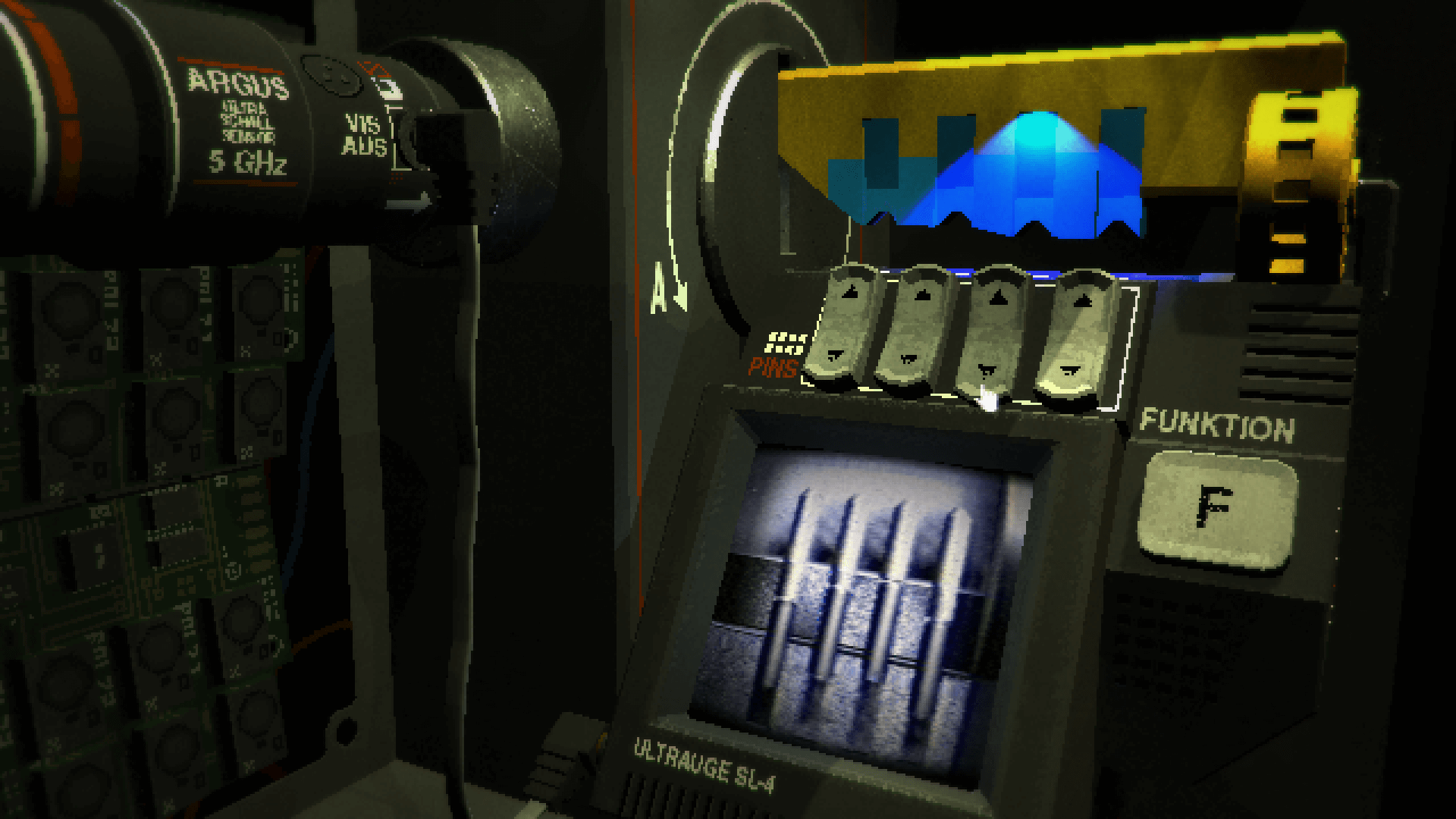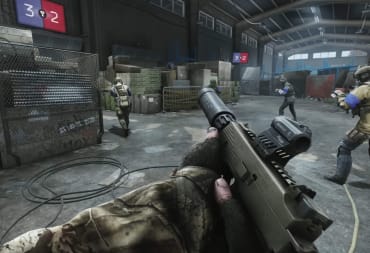Let me tell you, this feels like exiting Heaven’s Waiting Room for the only time. This a quick personal tangent, but SIGNALIS was something I came across on a random Twitter thread back in 2018, and a small teaser trailer was enough to build hype, and tension. The German dial tones, the brief glimpses into otherworldly horror dancing between 2D and 3D art. It was something that immediately set me on the edge of my seat, and now? Now it’s 2022, and we’ve finally come to rest.
This is the debut full-scale release from German developers rose-engine, a duo consisting of Yuri Stern and Barbara Wittmann. A survival horror project 8 years in the making, SIGNALIS follows the story of Elster, a “Replika” who has crash-landed on a snow-covered planet, located on the edge of the galaxy. Finding evidence of life in an abandoned labor camp, Elster finds the biomechanical androids similar to her have all fallen victim to an infection, and now Elster finds herself trying to survive while finding her companion.
This is but one of the many plot points in SIGNALIS, which in truth, is a massively dense web of narrative themes covering everything from emotional repression to authoritarian oppression. While synonymous in definition, the game ends up becoming incredibly subversive in exactly what the characters of SIGNALIS represent, and to great effect. In between all of this, the game is also pulling off an incredible juggling act with its combat and puzzle design.

While not unique in its mechanical, visual, or even aesthetical presentation, SIGNALIS pulls off a near-flawless execution of creating its own ideations and feel. You’ve got the blurry trails of 90s CRT screens as contextual button presses, “high-res” versions of models you can view in an inventory, and a mix of both 2D and 3D cutscenes that both blend seamlessly together. Again, while none of this is strictly new, it’s about how willing the game is to dive into the surreal from the get-go to reinforce its framing.
The closest comparison — besides your Resident Evils and your Alone in the Darks — would be the similarly lo-fi horror title Boreal Tenebrae, or even Yume Nikki. It does well to immediately make you wary of any event or movement made, and does so until the dying moments of the game, even when you think you have a hold on things. It shows an uncompromised vision, especially since in a story like this, sacrifice can breed complacency, but this direction can be a double-edged sword when put up against accessibility.
Thankfully, the game can still be accessible enough to not scare off potential newcomers to the genre, thanks to partially simplified combat. Despite an immediate lack of variety in the monsters you’ll face, or options of disposal, SIGNALIS focuses on powerful sound design in more ways than one to sell the force these weapons have. While all ballistic-related, each one sounds like a monster inside these claustrophobic hallways, even if these enemies don’t always go down on the first shot.

The biomechanical beasts you’ll be facing off against always have a weakness of bullets and buckshot, although there is no permanent melee option, only the use of a disposable stun prod. However, due to their mechanical wiring, they will never be fully dead until you use a thermite flare to incinerate the corpse — similar to Crimson Heads in the first Resident Evil. Unfortunately, there are two problems with this.
The first problem is how everything within the game is finite. While running away is always an option, the fact that 90 percent of combat encounters will be something you’ll have to revisit while backtracking can put a damper on your supplies. On top of that, you also have to deal with an aggressively small inventory size of six items only, with no chances to upgrade storage size. At best, you’ll always have two free spaces on hand to pick up new things, but SIGNALIS is also inconsistent with what can and can’t be destroyed on the spot to free up space, so if you find a key item with no space to pick it up? Sorry, gotta backtrack.
Quickslot items are a pain in the ass for this. Items like the progression-relevant flashlight module, or the thermite flares can be put into a section inside the inventory screen so you can use them without heading into the inventory. In a perfect world, placing an item in this quickslot spot would mean it wouldn’t take up space in the main inventory, but this isn’t a perfect world. It’s an incidental effect that harms elements like backtracking and the puzzle design, with both seeming artificial when it comes to how they lengthen the game.

It’s a cynical thing to say, especially when there are glimpses of sheer genius within these puzzle boxes levels can represent. Sound design plays a huge part here also, thanks to a radio attachment that Elster uses to attain items or codes to locked doors, and there are several times when I personally had to write solutions and clues down. This is a dream come true when it comes to tackling survival horror titles like this, even if the act of collecting multiple keys to open one door happening twice in quick succession can feel repetitious.
At the very least, the puzzles within these cumbersome key quests showcase a great use of puzzles seen in survival horror titles prior, while also having a few new tricks of its own. Using a fascinating combination of sight, sound, and item usage to get by, it’s as perfect as can be, nearly blasting past the fear of repetition, and a regressive limitation of what you can carry at one time. It does well to never intrude, and it does well to keep the pacing up, galavanting between rooms to double-check for missing items.
As for the horror itself? It’s perfect if it’s the type of horror you’re looking for. While cosmic horror is the more common aspect showcased, SIGNALIS also dips its toes into existentialism quite often, which has a “mileage-may-vary” element to it more than any other type of horror. It blends into the narrative brilliantly, thanks to a large anti-capitalist stance taken within the world it inhabits, but it’s also something that’s tough to break down in a brief manner.

There’s elements of misogyny, the dehumanizing of a personality that’s integrated into a hive mind — ironically, repetition also plays a large part. Love in a time of war will always be soft, but war in a time of love will tear you apart. The sheer determination humanity has in the face of death isn’t something new to you or me, but the newfound aspects of life characters like Elster suddenly face have become both wondrous and a liability. A liability that previously would have seen Elster and her manufactured siblings destroyed.
There’s not enough room to cover it all here, but it all makes for an ending that leaves you with a lump in your throat, no room to breathe, and all the time in the world to think. Every immature aspect of how these characters face their fates is simply the rumination of repression as a species, and it makes for something beautiful at the end of it all. It may be an infinitely tall statement, but what SIGNALIS does for cosmic horror is similar to how Silent Hill 2 became the benchmark for psychological horror.
SIGNALIS Review | Verdict
SIGNALIS is special. While it stumbles as a mechanical presentation of its contemporaries, it carves a new home for itself within a genre that is now beginning to return to the spotlight. While it may not be the new face of survival horror, cosmic horror, or even nihilistic horror, it shows determination in the wake of a revival aesthetic that may see oversaturation, and it has character. On top of being a potential spooky staple in your library, it also has one of the best narratives to dissect in recent memory.
TechRaptor reviewed SIGNALIS on Xbox One S using a copy purchased by the reviewer. It is also available on Xbox Series S|X, PC, PlayStation 4, PlayStation 5, and Nintendo Switch.
Review Summary
Pros
- A fantastic, dense narrative to ruminate upon
- Refreshing horror focus on existentialism
- Combat finds its footing, despite limitations
- Puzzle design shows unique flashes of brilliance
Cons
- Repetition can be a problem in the middle section of the game
- Backtracking can feel artificial at certain points
Have a tip, or want to point out something we missed? Leave a Comment or e-mail us at tips@techraptor.net







